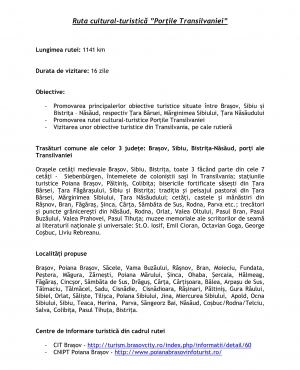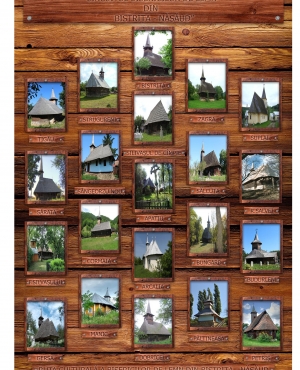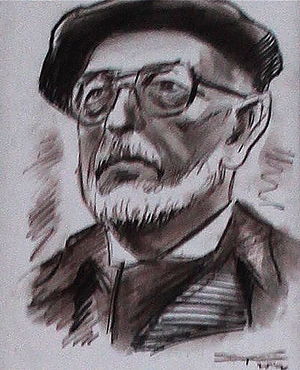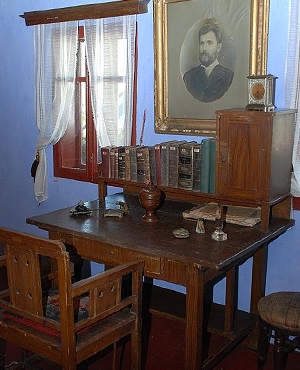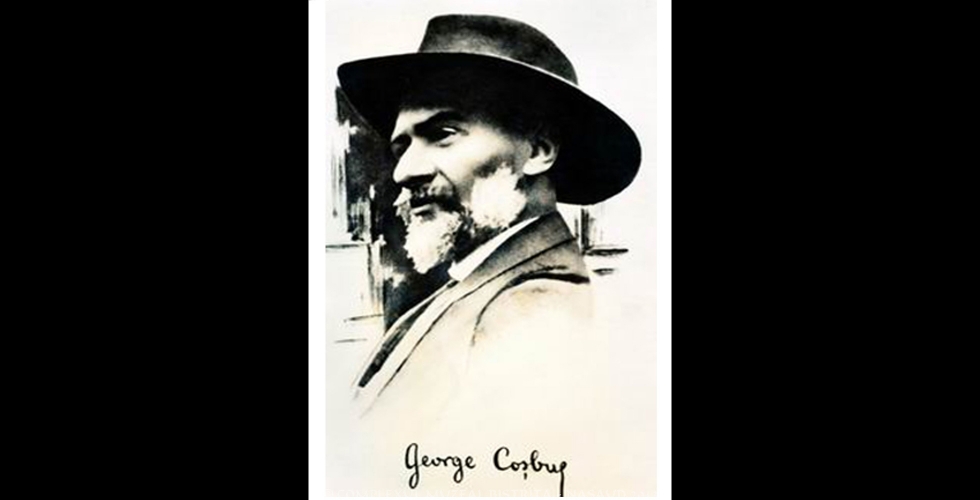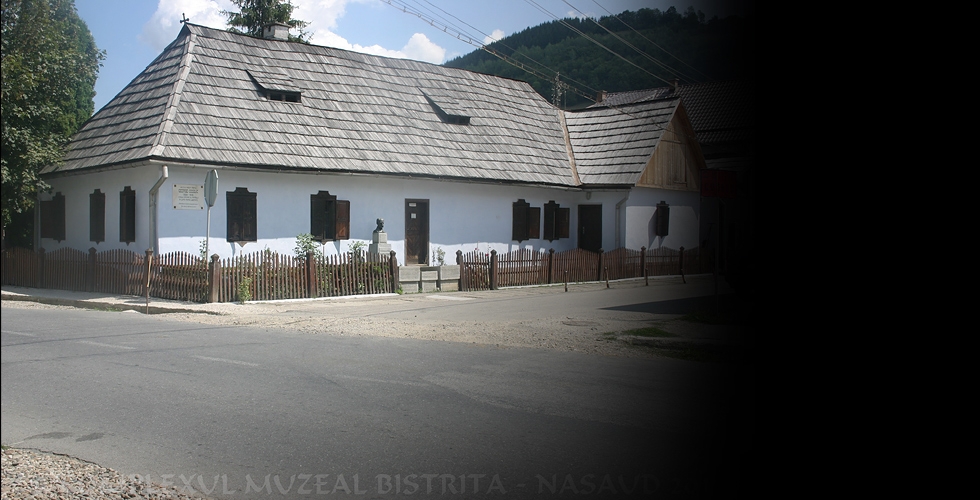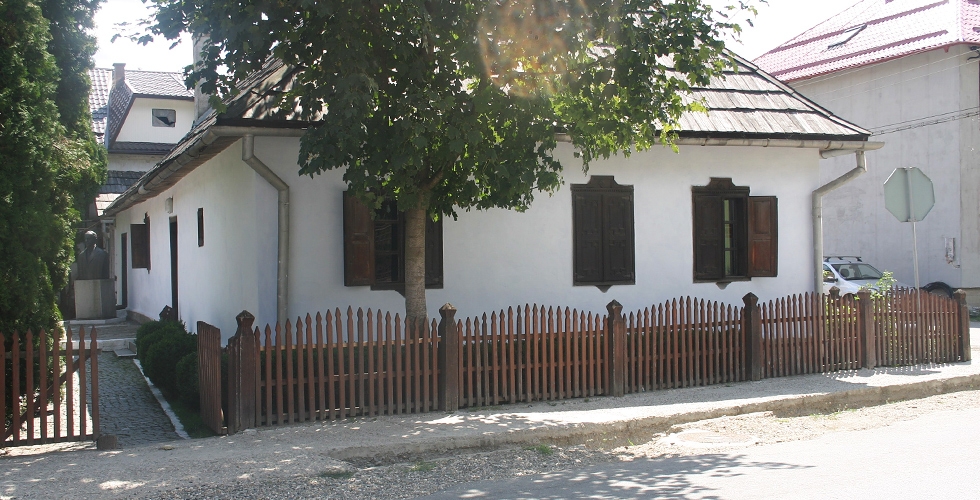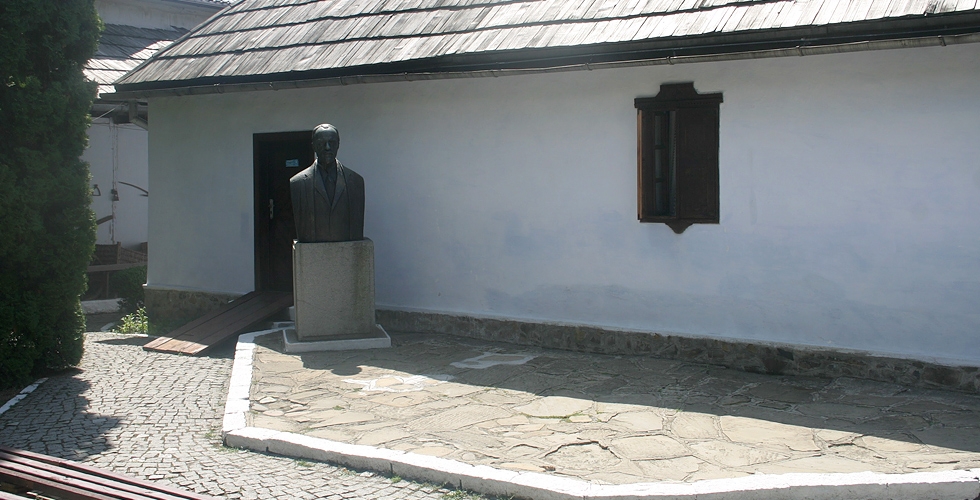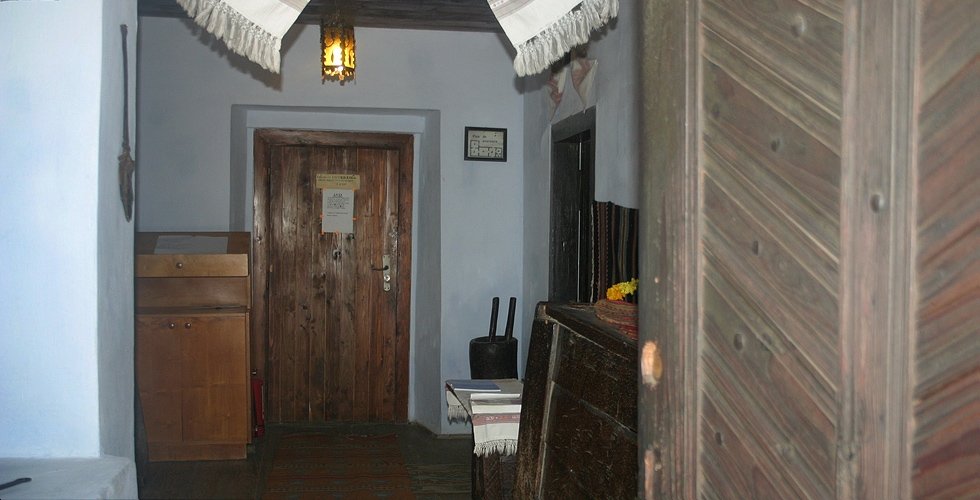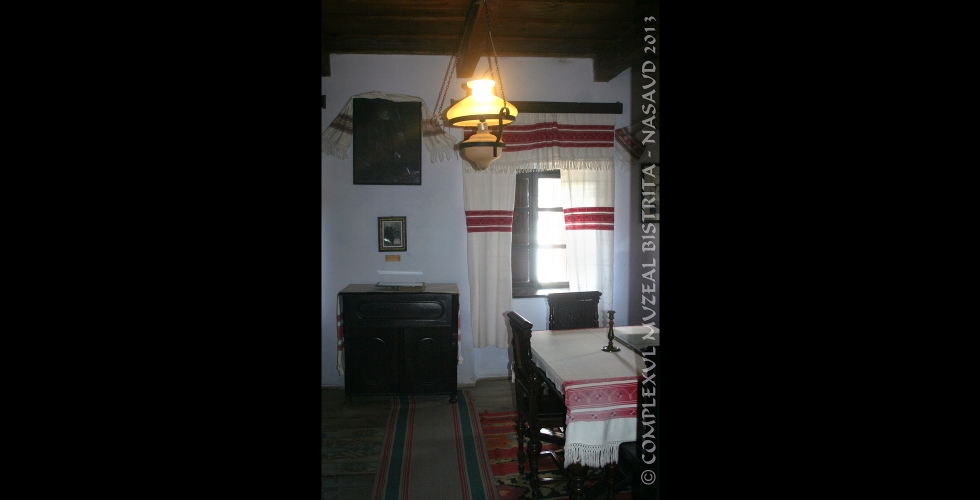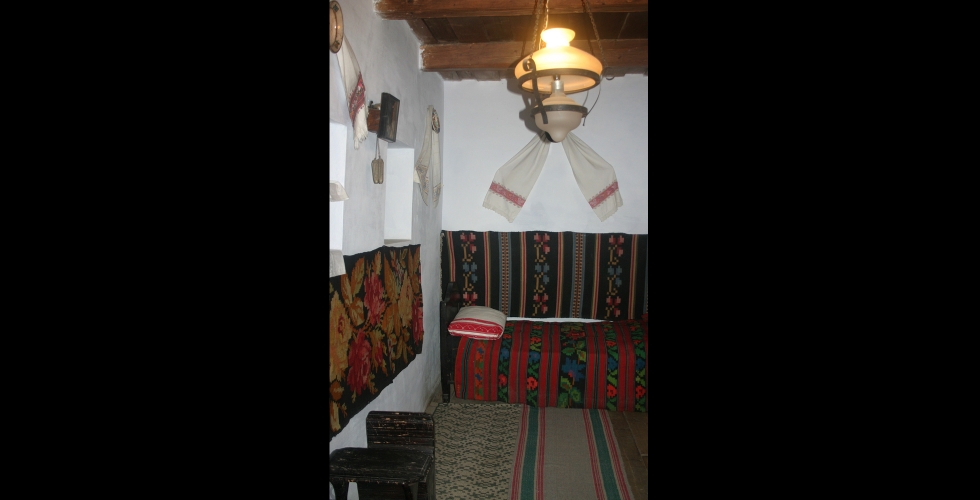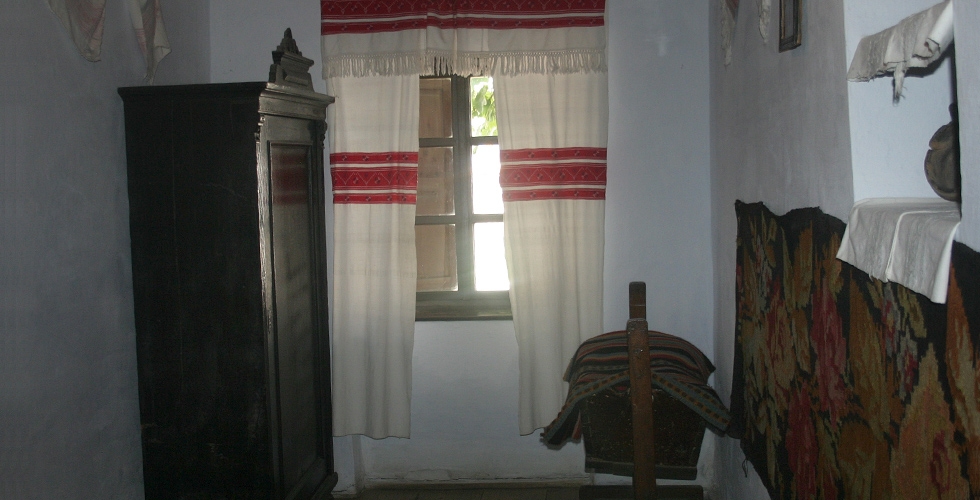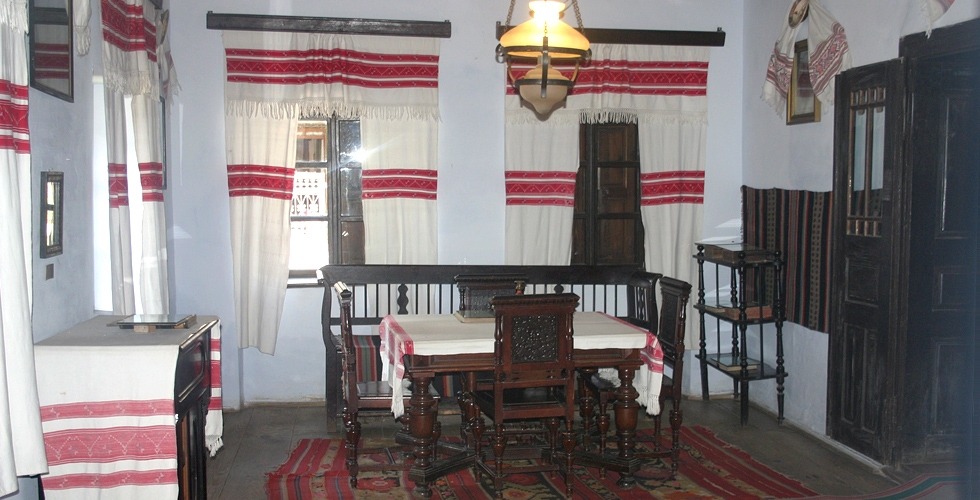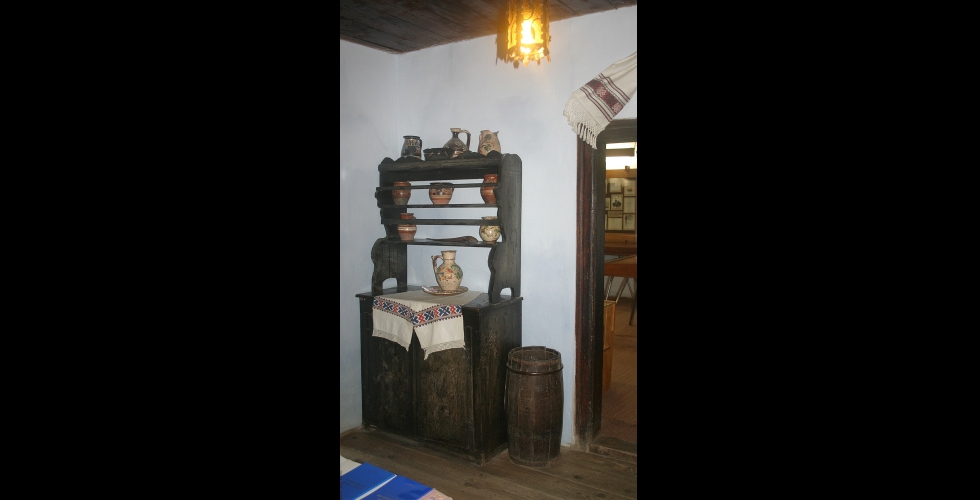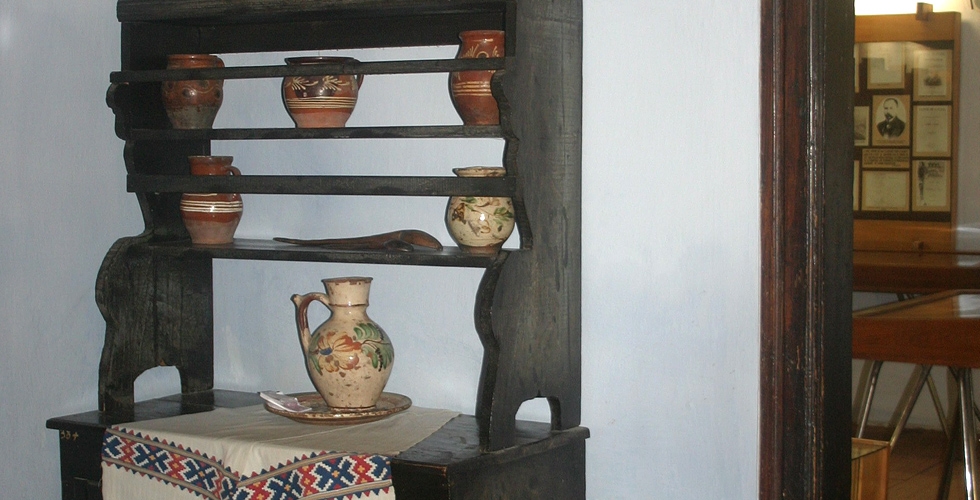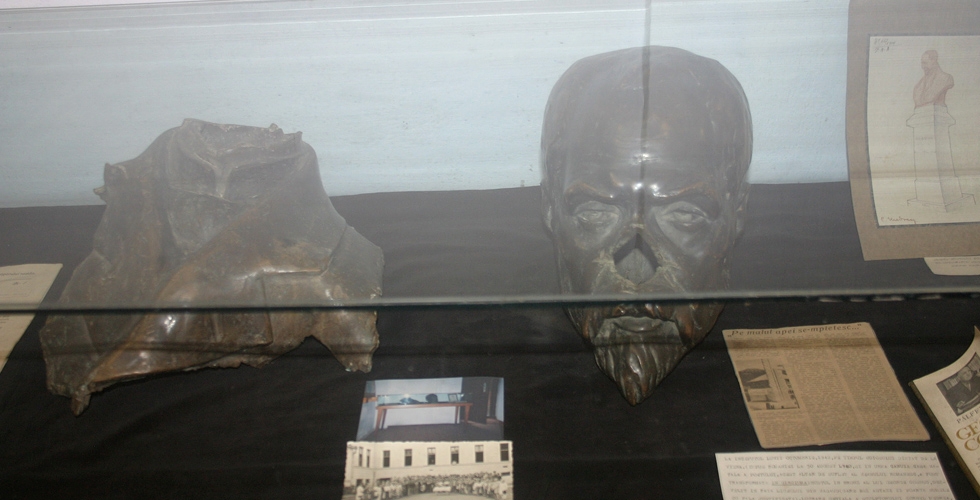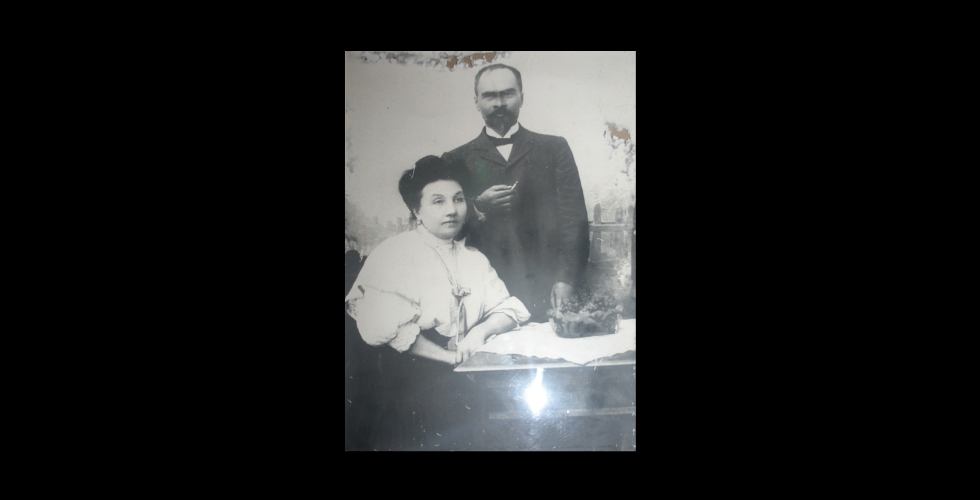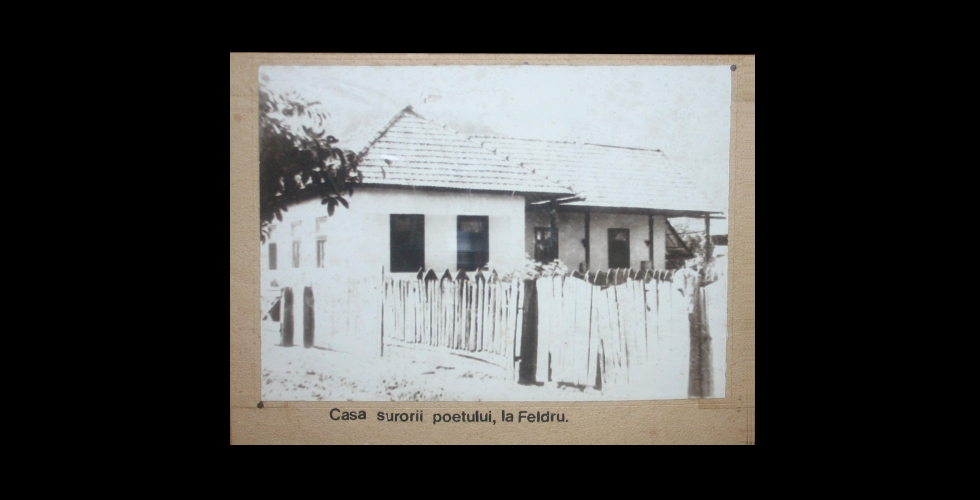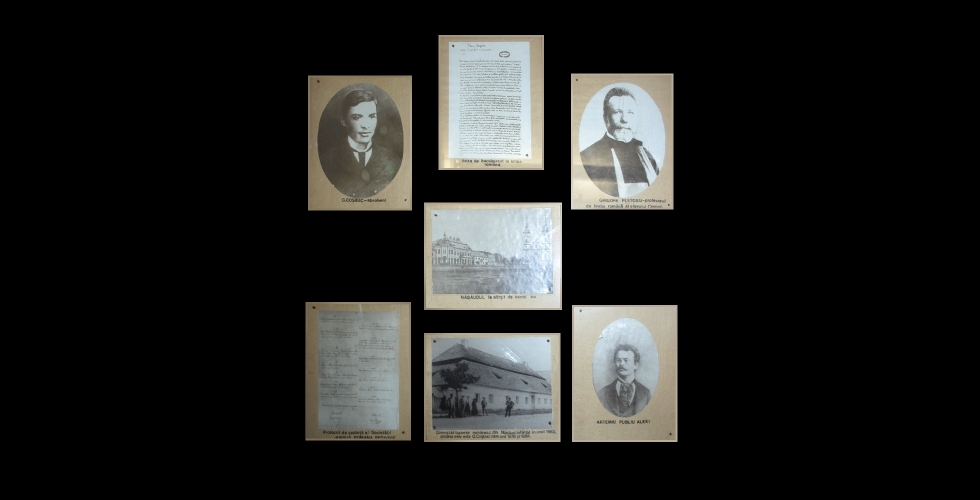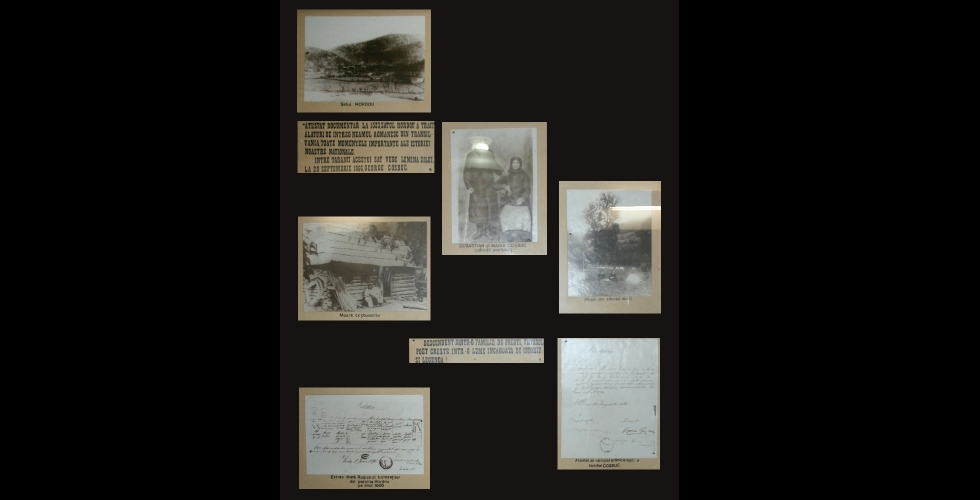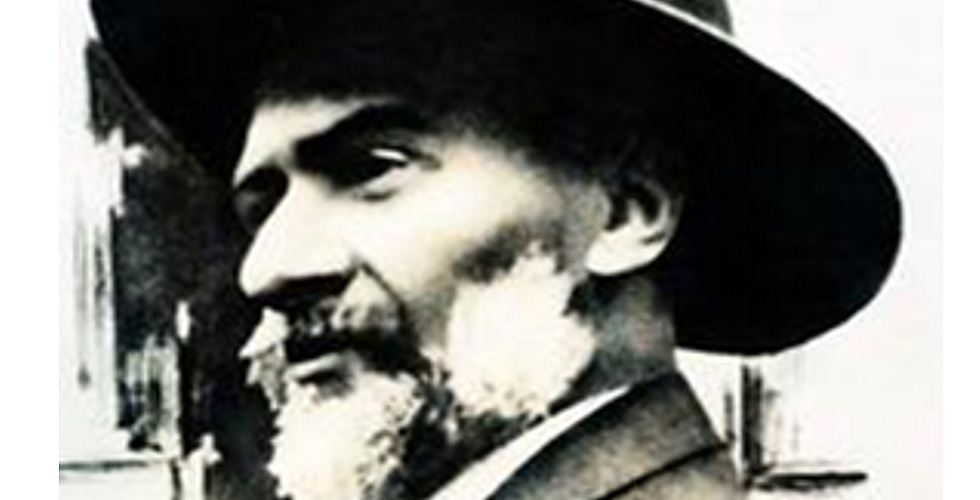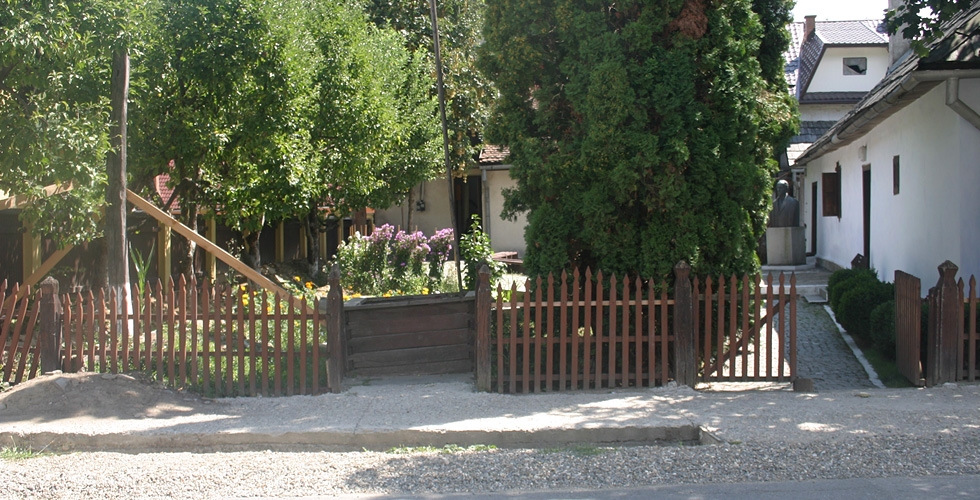Intr-un muzeu daca dorim sa venim in intampinarea dorintelor beneficiarilor de diverse tipuri este important sa tine
Memorial Museum "George Coşbuc", Coşbuc
You are here
Memorial Museum "George Coşbuc", Coşbuc
Appreciated as one of the oldest buildings in the area of Tara Nasaudului (County of Nasaud), the birth-house of the poet George Coşbuc was built around 1840, being inhabited, generation after generation by the poet’s parents together with their 14 children and the grandfather of the poet, the priest Anton Coşbuc.
After the death of the priest Sebastian, Cosbuc’s father (1901) and mother, Maria (1903), the house remains, agreed by the brothers, to the youngest, Aurel. This will pass it on to his older son, Sebastian, from whose widow, Maris, the Romanian government will buy it in 1954.
At the initiative of the group of Transylvanian scholars, editors of the magazine „Luceafărul” (The Evening Star), from Sibiu, the “master” of the house, Aurel Cosbuc agrees to set up a museum dedicated to the poet. This happens and this way, the birth house of the poet George Cosbuc will become the first Romanian literature’s memorial museum in Romanian area.
It is equally true that this museum was organized in the area of the firsts two rooms (the sanctum and the guests’ room), where there were exhibited, on several tables, the volumes published in Romania, framed photographs of the poet and his family, papers and magazines in which the poet has published.
In the other four rooms there lived Aurel with his family. On May 14th 1922, there is unrevealed the first memorial plate on the house’s wall, only four years after the death of the poet, at the initiative of a group of professors and students in medicine at Cluj. The plate is brought by train up to Salva. At Salva station the professors and students from Cluj are awaited by officials from Nasaud and Salva as well as by professors and students of the schools in Nasaud, who, together will build up a procession that was to follow the route Salva Station – Birth House of the poet, for 8 km, along Salauta River. The marble plate was carried on arms by the eminent students and pupils that were singing romances composed on the lyrics of the poet.
The press of the time records the event like this: ”In the Railway Station Salva, people impossible to count, dressed in fair clothes salute us, the several hundreds of white collars, came from the dust of the cities to piously honor the old house of the nature singer. The clumsy villagers welcoming us happy; the clumsy us, we are happy too, wearing our black, scanty clothes, that appear so ugly for the first time, in comparison to the foam of the white garments and shirts with embroidery…. After a short ascension we suddenly descend to the small village, tight-packed at the feet of the hills surrounding it. The little church’s tower rises shy and pious over the households that do not seem wealthy. The village Hordou, where George Cosbuc was born, is really modest.”, observes C. Humureanu in „Gândirea”, no.II, p.74-75, Cluj, 1922.
During the troublous and agitated times of the war, when the authorities, timely occupying the country, will set up a saloon in the house, the villagers made a common decision not to enter the house, which, as a salute, the occupying, used to spit.
July 4th 1954 is the Museum Coşbuc is re-opened to the public, after a two years long reparation period. It was a Sunday, when the lanes were filled with “foreign” people and inhabitants of the village.
In the presence of the authorities of the Region Cluj, of the County Nasaud, of many scholars, of the member of the Romanian Academy - Emil Petrovici, of Gavril Scridon from Cluj, Gavril Istrate and Al.Husar from Iaşi, of numerous writers from Cluj, among which the late A.E.Bakonschi, Vasile Rebreanu, Aurel Rău etc., many students from Cluj and Nasaud, there was unshrouded a second commemorative plate and another bust of the poet made by the same C.Medrea.
The national and local press dedicated large editorials to the celebrations in Cosbuc. The village inhabitants made proof again of their proverbial hospitality. An interesting and inspiring moment was the celebration of the centennial of poet’s birthday in the period 17th -19th of September 1966. During those days, every inhabitant of the village had a mission to accomplish for the 150 guests, as the statistics registered. And „it was so much sung and so much whistle, as never before”.
Registered in the calendar of the Great Anniversaries for the year 1966, the Centennial was honored by the presence of writers from all continents. „All over the world, poets are born, but you, Romanian, make yours immortal” – noticed the representative of the Italian Union of the Writers, Ellio Filippo Accroca.
Homages or anniversaries in the memory of the poet, follow the same traditional ritual, every time is needed. Every time the inhabitants of the village pay their spiritual and material tribute to the success of the event. The schoolchildren starting from kindergarten up to the high-school graduate are always present, dressed together with the parents, in festive garments well-kept in dowry chests.
We have to remind here, the welcoming of foreign delegations, of politicians and of writers, at all editions from the first decade of October, of “Cosbuc Colloquia”, at awarding of prizes, book releases, etc. Within the school, there is a literary-artistic group centered on themes from the work of Cosbuc.
Another important cultural event developed in 1998 on the occasion of commemorating 80 years from the death of the poet. At that moment, there were changed the tomb stones of the poet’s parents and great-grandfather from the cemetery, with marble ones and there were unshrouded 3 memorial plates at the new school, on the foundation of the old school and at the Cultural Center „Iuliu Bugnariu Sălăuţeanu, school teacher and folklorist”.
The look of the museum today was set in 1986 based on the exhibition theme elaborated by the researcher Constantin Catalano, when, supported by the president of the County Council Bistriţa-Năsăud, Mihai Marina, the entire museum from Hordou was rehabilitated.
The windows of the old building were reconditioned on the initial look, there was built a barn for the exhibition of household objects, there was arranged the open-air amphitheater in the back-yard of the house, there was rehabilitated the administrative building with two stories and the mill of the village, the Mill Street was asphalted and the path to the mill was paved.
This time the mill became functional thanks to the hydro-technical improvements undertaken along the Salauta Valley, where from the water was directed through a special canal to the mill, to the great joy of the visitors and especially of the students, and to the nostalgia of the elder.
The first three rooms of the house (the porch, the guest-room and the sanctum) recompose the atmosphere of poet’s childhood especially because of the objects from the inventory of priest’s Sebastian Cosbuc family. Furniture, books from the library of the priest, family paintings, decorative objects (towels, plates), make up this idyllic, patriarchal atmosphere.
The documentary exhibition in the living-room of the family convinces the visitor about the national and universal value of the poet from Hordou. Aspects from the history of the museum are to be found in the fifth room, the former storage-room of the family, where the moment 1966, the centennial of Cosbuc’s birth is especially evoked. Part of the poet’s library, as well as several personal objects are sheltered in the former parish office.
After this itinerary, the visitor is invited to see the exhibition of household objects and then is led to the mill-museum, a real piece of heaven and introspection, where one can still see the poplars “eternally mourning” …!!!
Apreciată ca una din cele mai vechi clădiri din spaţiul Tării Năsăudului, Casa natală a poetului George Coşbuc a fost clădită în preajma anului 1840, fiind locuită, rând pe rând, de părinţii poetului împreună cu cei paisprezece copii şi bunicul poetului, preotul Anton Coşbuc.
După moartea preotului Sebastian, tatăl lui Coşbuc(1901) şi a mamei , Maria (1903), casa rămâne, prin înţelegerea fraţilor, celui mai mic dintre ei, Aurel. Acesta o transmite fiului mai mare, Sebastian, de la a cărui văduvă, Maria, o va cumpăra statul român în 1954.
Din iniţiativa grupului de cărturari ardeleni , redactori ai revistei „Luceafărul”, de la Sibiu se convine de comun acord cu „stăpânul” casei, Aurel Coşbuc, să înfiinţeze un muzeu dedicat poetului. Lucru acesta se şi întâmplă şi astfel casa natală a poetului Coşbuc devine primul muzeu memorial de literatura română din spaţiul românesc.
Este foarte adevărat că acest muzeu era organizat în spaţiul primelor două încăperi ( chilia şi camera de oaspeţi), unde erau expuse pe nişte mese volumele apărute în România , fotografii înrămate, cu poetul şi familia, ziare şi reviste în care poetul a publicat.
În celelalte patru încăperi locuia Aurel cu familia. În 14 mai 1922 este dezvelită prima placă comemorativă pe zidul casei, la numai patru ani de la moartea poetului, din iniţiativa unui grup de profesori şi studenţi medicinişti clujeni Până la Salva placa este adusă cu trenul. În gara Salva profesorii şi studenţii de la Cluj sunt aşteptaţi de notabilităţile Năsăudului şi Salvei precum şi de profesorii şi elevii şcolilor năsăudene, care împreună vor forma o procesiune ce urma să facă traseul Gara Salva - Casa poetului, cale de 8 km, de-a lungul Sălăuţei. Placa din marmură a fost purtată pe braţe de studenţii şi elevii eminenţi care intonau romanţe pe versurile poetului.
Presa vremii consemnează astfel evenimentul: ”În gara Salva, popor fără sfârşit în haine de sărbătoare iese în întâmpinarea noastră; celor câteva sute de surtucari veniţi din praful oraşelor să cinstim pios casa bătrânească a cântăreţului de plaiuri. Sunt bucuroşi şi stângaci ţăranii ce ne întâmpină; bucuroşi şi stângaci suntem şi noi, în hainele noastre negre şi strâmte , ce ni se par întâia oară în toată urâţenia lor alături de spuma veşmintelor albe şi cămăşilor cu altiţă…După un urcuş scurt, scoborâm deodată în satul mic, înfundat în poalele dealurilor care-l împrejmuie strâns ca un talger. Turnul bisericuţei abia se ridică sfios şi cucernic, deasupra gospodăriilor cari n-au o înfăţişare de bogăţie. E sărac de tot satul Hordou unde s-a născut George Coşbuc.”, observă C. Humureanu în „Gândirea”, nr.II, p.74-75, Cluj, 1922.
Şi în perioada tulbure, de restrişte, din timpul războiului, când autorităţile vremelnic ocupante vor aduce o crâşmă în casă, hordouanii s-au solidarizat să nu calce pragul casei pe care, în semn de salut, ocupanţii îl scuipau.
4 iulie 1954 este ziua în care Muzeul Coşbuc este redeschis pentru marele public după ce vreme de doi ani s-au făcut reparaţii capitale, la acoperiş, împrejmuire etc. A fost o zi de duminică în care uliţele satului s-au umplut iarăşi de lume „străină” căreia i s-a alăturat populaţia locală.
În prezenţa autorităţilor Regiunii Cluj, a Raionului Năsăud , a multor intelectuali Academicianul slavist Emil Petrovici, Gavril Scridon de la Cluj, Gavril Istrate şi Al.Husar de la Iaşi, a numeroşi scriitori clujeni între care şi regretatul A.E.Bakonschi, Vasile Rebreanu, Aurel Rău etc., foarte mulţi studenţi clujeni şi elevi năsăudeni a fost dezvelită a doua placă comemorativă şi o altă variantă a bustului poetului realizată de acelaşi C.Medrea.
Presa regională şi centrală informa pe larg despre serbările de la Coşbuc. Iarăşi hordouanii au făcut dovada proverbialei lor ospitalităţi. Un moment inedit şi cu adevărat înălţător a fost aniversarea Centenarului naşterii poetului în zilele de 17 –19 septembrie 1966. În aceste zile fiecare cetăţean al satului a avut o misiune de îndeplinit pentru cei peste 150 de oaspeţi, cum consemnează statisticile. Şi „a fost atâta chiu şi cânt…că nu s-a pomenit cuvânt”.
Trecut în calendarul Marilor Aniversări pentru anul 1966, Centenarul a fost onorat de prezenţa unor scriitori de pe toate continentele. „Pretutindeni se nasc poeţi, dar voi românii îi faceţi pe ai voştri nemuritori” - observa reprezentatul Uniunii Scriitorilor Italieni, Ellio Filippo Accroca.
Omagierile ori aniversările în memoria poetului se desfăşoară conform aceluiaşi tradiţional ritual de câte ori este nevoie. De fiecare dată coşbucenii îşi aduc tributul spiritual şi material pentru buna reuşită a evenimentului. La toate activităţile este prezentă populaţia şcolară care de la micul grădinar până la absolventul de gimnaziu îmbracă, alături de părinţii lor hainele de sărbătoare, bine rânduite în lăzile de zestre şi participă la manifestări.
Amintim aici, întâmpinarea unor delegaţii străine, a oamenilor politici , a scriitorilor, la toate ediţiile din prima decadă a lui octombrie, a „Colocviilor Coşbuc”, la decernări de premii, lansări de cărţi etc. În cadrul şcolii există un grup literar artistic al cărui repertoriu este gândit pe teme coşbuciene.
O altă acţiune culturală mai amplă s-a desfăşurat în mai, 1998 cu ocazia omagierii poetului la împlinirea a 80 de ani de la moarte. Atunci au fost schimbate pietrele funerare din cimitirul bisericii ale străbunicului şi părinţilor poetului cu altele din marmură şi dezvelite 3 plăci comemorative, la şcoala nouă, pe locul vechii şcoli şi la Centru cultural „Iuliu Bugnariu Sălăuţeanu, dascăl şi folclorist”.
Aşa cum arată muzeul azi a fost gândit în 1986 după planul tematic expoziţional realizat de cerc.ştiinţ. Constantin Catalano când în urma sprijinului Preşedintelui de atunci al Consiliului judeţean Bistriţa-Năsăud, Mihai Marina a fost reabilitat întregul ansamblu muzeistic de la Hordou.
S-au refăcut ferestrele şi uşile după modelul iniţial (original) la toate încăperile clădirii vechi, a fost construit un şopron pentru expoziţia de obiecte gospodăreşti, amfiteatrul în aer liber din curtea casei, clădirea administrativă cu două nivele, s-a refăcut din temelii moara coşbucenilor, a fost asfaltată strada morii şi pietruită poteca de la moară.
De această dată moara devenise funcţională prin amenajările hidrotehnice realizate pe Sălăuţa de unde a fost adusă apa special pe un canal pentru a putea măcina moara spre bucuria vizitatorilor şi mai ales a elevilor dar şi pentru nostalgia bătrânilor.
Primele trei încăperi ale casei (tinda, camera de oaspeţi şi chilia) recompun atmosfera copilăriei poetului prin prezenţa obiectelor provenite din inventarul familiei preotului Sebastian Coşbuc. Piese de mobilier, cărţi din biblioteca preotului, tablouri de familie obiecte decorative(ştergare, farfurii), întregesc această atmosferă idilică şi patriarhală.
Expoziţia documentară din camera de zi a familiei reuşeşte să convingă vizitatorul de valoarea naţională şi universală a poetului de la Hordou. Aspecte din istoria muzeului le regăsim în cea de-a cincea încăpere, fosta cămară a familiei unde ne oprim ceva mai insistent asupra momentului 1966, Centenarul naşterii lui George Coşbuc. O parte din biblioteca poetului precum şi câteva obiecte personale sunt adăpostite în fostul birou parohial.
După acest itinerar vizitatorul este invitat să vadă expoziţia de obiecte gospodăreşti şi apoi condus la moara-muzeu, adevărat colţ de rai şi reculegere în mijlocul naturii de unde se văd şi plopii care mai „doinesc eterna jale”…!!!


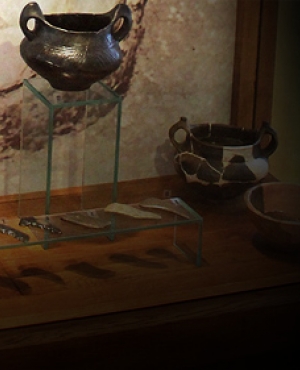
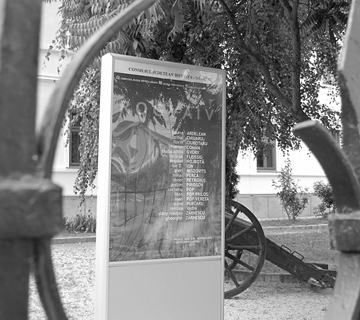 Clipuri Video
Clipuri Video
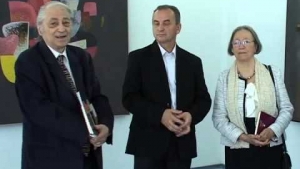
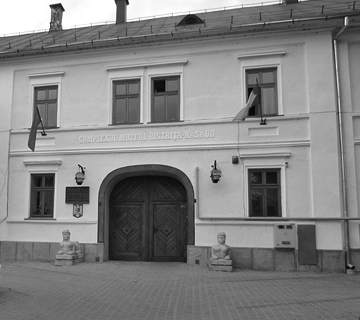 Complexul Muzeal Bistriţa-Năsăud
Complexul Muzeal Bistriţa-Năsăud
